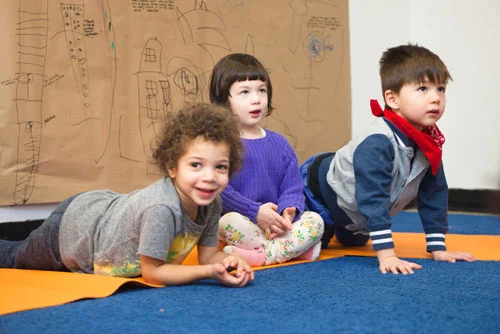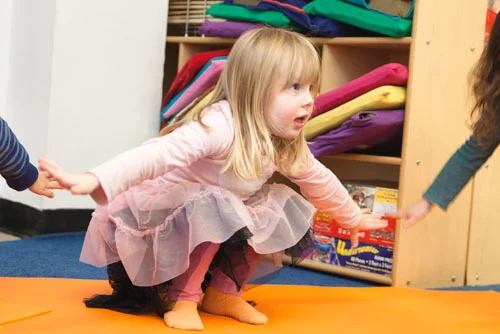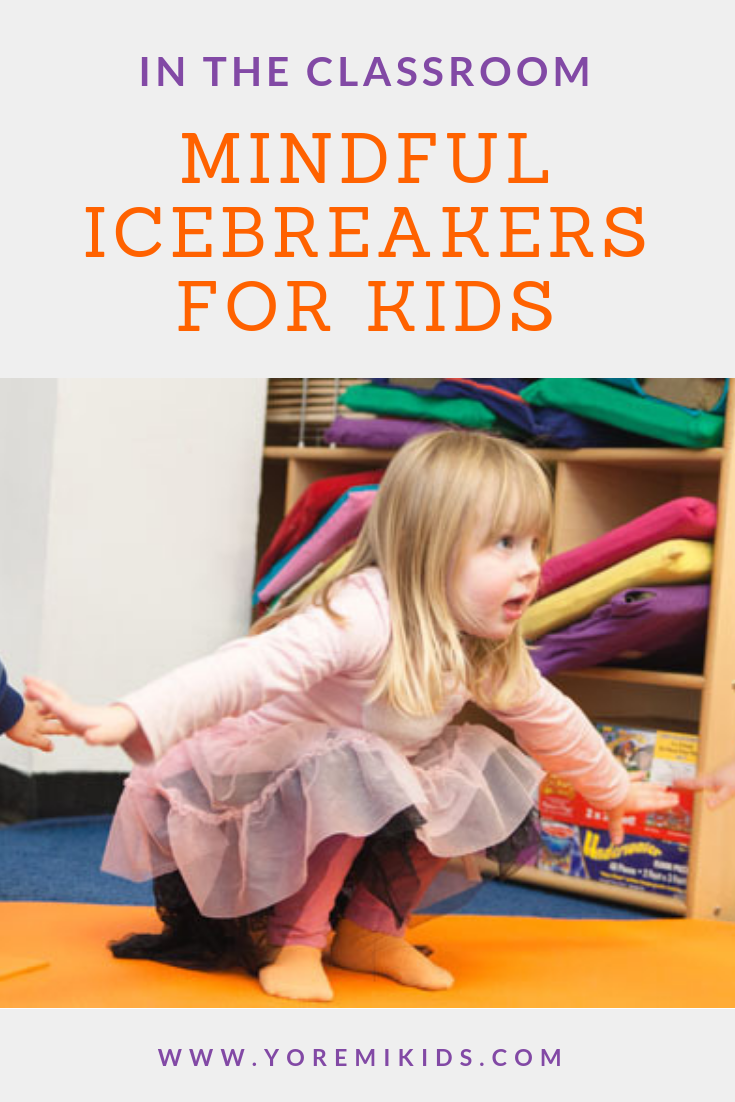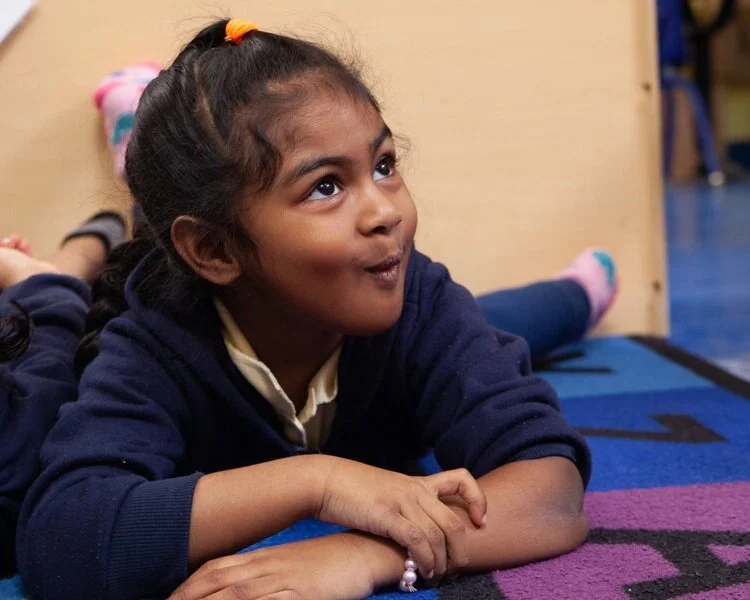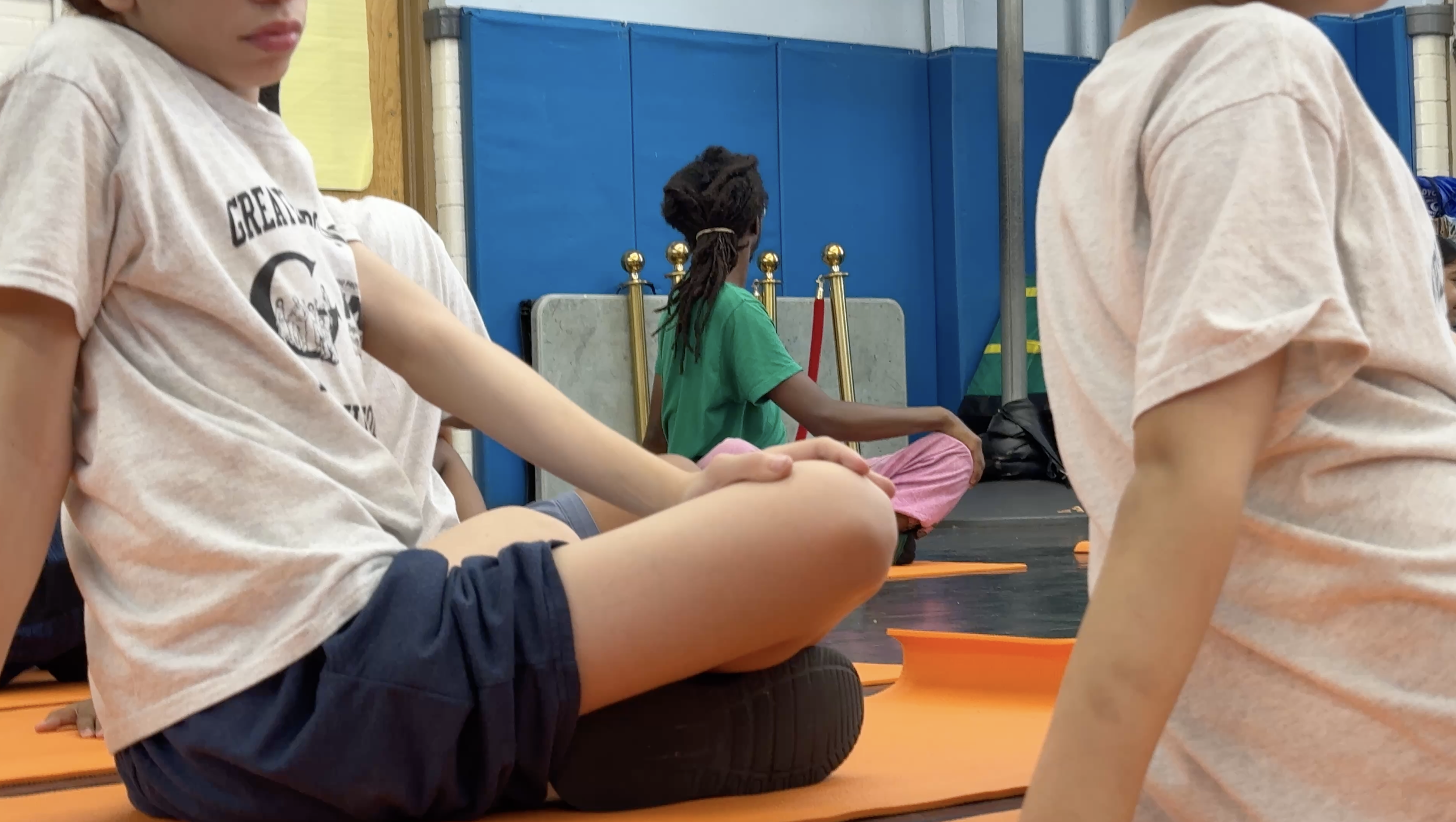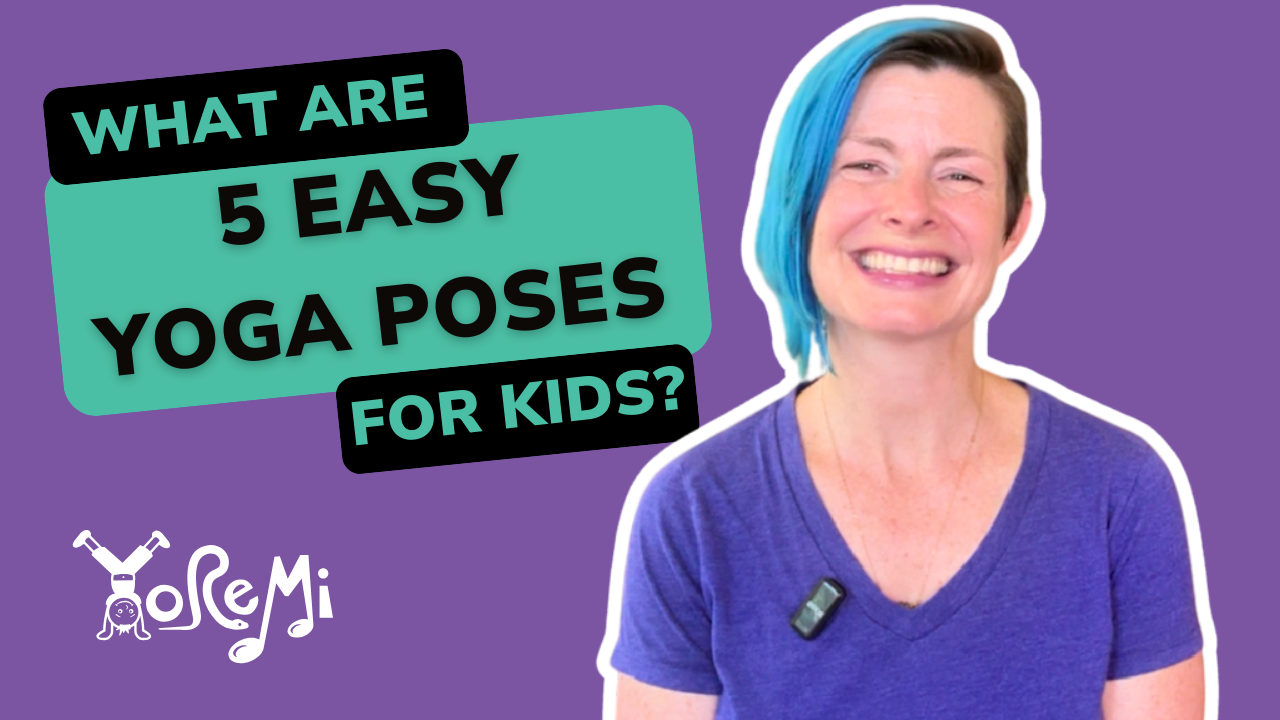Yoga and Mindfulness Icebreakers for Kids: Perfect for Back to School
With the first day of school rapidly approaching, teachers, students and parents all hold a collective breath in nervous anticipation.
What will this year be like?
Will I make friends?
Will my child like school?
How can we set everyone up for success this year?
So much happens in the first few weeks of school and a huge predictor of student outcomes is how much they feel like they belong in this new environment. In fact, belonging is not just important for the children but for parents and teachers as well.
“True belonging does not require you to change who you are, it requires you to be who you are.”
How can we bring children together in a fun way that quickly creates trust and community? Here are some of our favorite yoga and mindfulness icebreakers for kids -- perfect for these important first few weeks and throughout the school year!
1. Mindful Icebreaker: Create relaxation with deep breathing
In many early education environments, we gather in a circle. Logistically, this helps everyone see one another. But energetically the circle puts us all on the same level (including the teachers) and introduces learning as a collaboration.
All are welcomed, included and have agency in creating and directing the group dynamic. As teachers, we acknowledge that we have just as much to learn from the children as we have to share with them.
Several scientific studies have shown our capacity for human connection and empathy shuts down when we feel anxious or unsafe. So a child who is entering a new space, with new people is not necessarily in the best mental state to create lasting connection to peers. By practicing deep breathing, and especially a long exhale, we can activate our parasympathetic nervous system (relaxation response) and create an environment of belonging.
Breathing Ball icebreaker Activity:
Gather in a circle and introduce the breathing ball, discuss how breathing works and ask children to place their hands around their rib cage and notice how their breathing feels. Maybe it’s slow or fast, maybe they feel something or maybe they don’t. Anything they observe is perfect.
Lead a few deep breaths with the breathing ball, extending the exhale. Be aware that small children will naturally have less lung capacity and make sure the rhythm is age-appropriate and comfortable.
Next, pass the breathing ball around the circle.
Invite each child to take a turn being the “Breath Leader” saying their name, how they are feeling today and then leading the group through one inhale and exhale with the breathing ball.
Encourage children to breath along with each other and possibly even move their hands apart and together in coordination with the ball.
Take a few silent moments at the end for children to once again place hands on their ribcage and notice how their breathing feels.
2. Yoga Name Game
This kids icebreaker game is for grown ups too! As an educators, we know it is so important to learn children’s names as quickly as possible. That doesn’t necessarily mean it is always easy. For educators who have several hundred students (administrators or specialists that work with multiple classrooms), it can be a daunting challenge.
This yoga name game is fun for the children and helps them learn each other’s names while also giving teachers beneficial mnemonic cues. Because we are combining kinesthetic (movement), auditory, and visual learning in one activity, the memory is much more likely to stick. This will hold true throughout the year and is one of the reasons yoga can enhance all learning objectives.
Gather in a circle, making sure everyone has room for whole-body movement. Try to have a jumping-jack worth of space between children.
Each person takes a turn saying their name, what letter or sound their name starts with, and then something else that starts with that letter or sound.
Have the child create and lead a movement or pose that corresponds to that object.
Everyone then repeats the child’s name and object while doing the movement. (Example: My name is Tim. Tim starts with the letter “T” or “tuh” sound. Something that starts with T is Tree (Tim makes a tree pose). Everyone says “Tim Tree” while making the pose.)
With older children you can make this more challenging by linking each new name/pose backward through the sequence to the first person. So eventually, the final round starts with the last participant and then repeats everyone’s name/pose all the way back around the circle to the first.
3. See the Bunnies Sleeping (ANIMAL YOGA FUN)
Animal poses are really accessible for children. They learn about animals from a very early age and pretending to be a dog, a cat or a cow is relatable and fun while engaging imagination and playfulness. Asking children about their favorite animal is a great way to get to know them and also for them to get to know each other.
This icebreaker yoga game is wonderful in a circle but can also be done in any open space for movement. Perfect for those moments you need a fun and energizing brain-break to help tired or restless children make it through a long school day.
Explain that we are all going to start as bunnies. Say “Go to sleep, bunnies” and have children rest in child’s pose to begin.
When the bunnies wake up they hop up and down.
Choose a child to share their favorite animal and repeat the whole sequence, selecting or having that child select the movement the animal will do when they wake up (stomp, run, bounce, prance, crawl, skip, wiggle, swim, etc).
Have each child take a turn saying a different animal. End with a long relaxation to calm and reset group energy.
Option to add an arts or literacy component by inviting children to draw or write in their journal about their favorite animal.
4. Mindfulness Bell Attention Activity
Establishing a signal to gather the group’s attention early in the year will create a peaceful and effective environment for learning. No one wants to try to shout over a group of children, and often kids don’t really respond to that anyway.
Find what works for you and your classroom. Maybe it’s a call-and-response, clapping a pattern or other auditory cue. We love to use an instrument like a chime or singing bowl. Just be sure it has enough pitch and ooomph to cut through even the loudest of groups.
Introduce the children to a chime, singing bowl or other similar instrument.
Give each child an opportunity to play the chime themselves and ask them to describe what they notice and hear.
Explain that whenever we hear the chime, we will stop what we are doing and close our eyes. We take a deep breath in and out, observing how our body and breathing feels. Try it a few times and invite children to express how they feel and what they notice.
Practice the Mindfulness Bell and Relaxation activity below, either with the audio track or guided by the teacher.
Use the mindfulness bell throughout the day to gather attention as well as to settle and calm classroom volume and energy.
5. Create a Class Song
Okay, does that suggestion make you feel a bit anxious? Don’t worry, not everyone will feel like they have the musical chops to make up an original song…and you don’t have to. But could you change the words to a song you already know well? Choose a theme like your classroom, fall, reading or whatever you are focusing on and then have the children help make up new words. They don’t even have to rhyme!
One of our favorite songs to personalize is Ram Sam Sam. You probably already know it, especially if you work with young children. Begin by teaching students the original version, with the fun movements of course, and then invite them to make up new words and movements for your lesson.
Check out how one classroom teacher did this for a “food and restaurants” theme!
6. I Am Calm Now
This ice-breaker is one of my favorites because we can do it solo or with the group and can be done anywhere - morning meeting circle, at desks or even waiting in line during transitions.
Watching your hand, touch the tip of your index finger to the tip of your thumb and say “I” and release
Touch the tip of your middle finger to the tip of your thumb and say “Am” and release
Touch the tip of your ring finger to the tip of your thumb and say “Calm” and release
Touch the tip of your pinky finger to the tip of your thumb and say “Now” and release
Repeat with one hand a few times, then try with both hands at the same time.
Close eyes and keep the hands moving.
Allow the voice to get quieter and quieter until there is no sound and we are simply making the hand movements and thinking the words.
To finish, rest palms in lap to take a few deep breaths. On the final inhale, reach hands up to the sky and then shake them all the way back down on the exhale.
Have children think about how they want to feel today and do a few rounds with their ideas - I am happy now, I am peaceful now, I am loved now, etc.
Not only does this exercise regulate the nervous system promoting peace and calm internally and externally, it also build fine motor skills very helpful for young children who are learning to write.
Whatever activity you choose to break the ice, remember to include everyone and to make it collaborative! Giving the children a chance to share something about themselves and to appreciate learning new things about one another is a wonderful way to build a loving and supportive classroom community for everyone.
Save this post:
Rachel Costello is the Executive Director of Yo Re Mi. She is a professional touring musician and Yoga Alliance registered teacher (ERYT200, RCYT, RPYT, YACEP) specializing in hatha, vinyasa, prenatal, postpartum, and yoga for labor and delivery. Through Yo Re Mi Rachel brings musical yoga enrichment to NYC children. Rachel has taught adults and children since 2005 and believes yoga harnesses our innate energy to increase self-awareness, confidence, health, positivity and balance, while having FUN!

